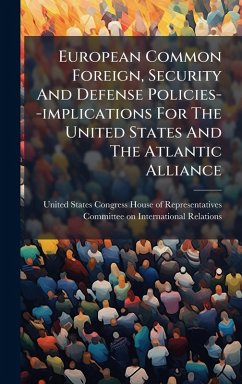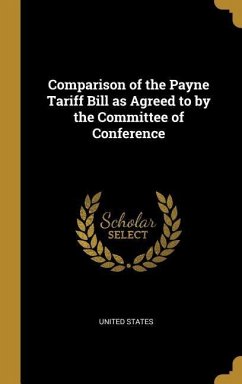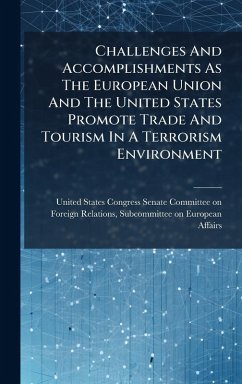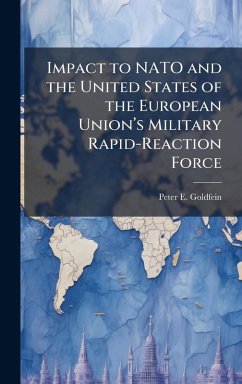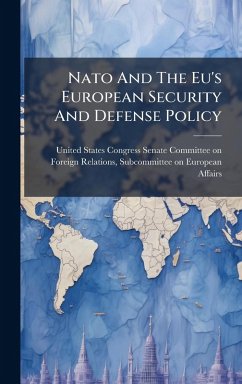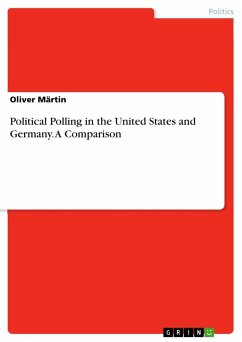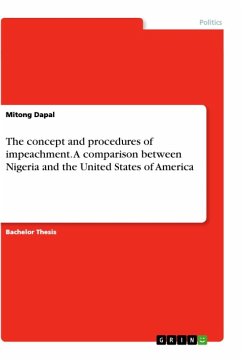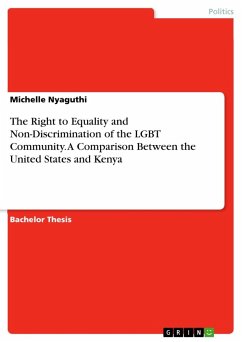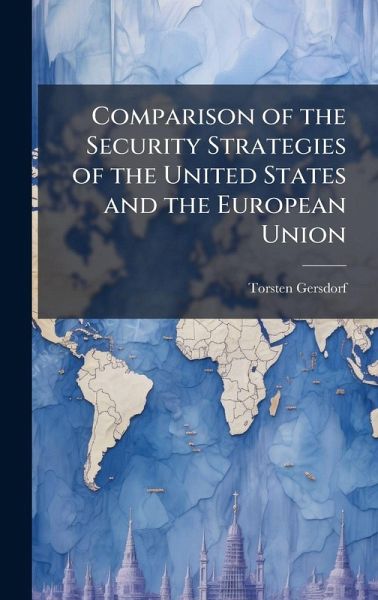
Comparison of the Security Strategies of the United States and the European Union
Versandkostenfrei!
Versandfertig in über 4 Wochen
25,99 €
inkl. MwSt.
Weitere Ausgaben:

PAYBACK Punkte
13 °P sammeln!
The comparison of both strategic documents shows that the analysis of the new threats of terrorism and proliferation of Weapons of Mass Destruction is similar, as well as the stated strategic goals/ ends. The great difference can be found in the ways/ concepts, how the United States on the one hand and the European Union on the other hand intend to counter these threats and to achieve the respective strategic goals/ends. The analyzed key differences are: Unilateralism versus multilateralism, preemption versus prevention and legitimacy of the use of force to achieve strategic objectives. The NS...
The comparison of both strategic documents shows that the analysis of the new threats of terrorism and proliferation of Weapons of Mass Destruction is similar, as well as the stated strategic goals/ ends. The great difference can be found in the ways/ concepts, how the United States on the one hand and the European Union on the other hand intend to counter these threats and to achieve the respective strategic goals/ends. The analyzed key differences are: Unilateralism versus multilateralism, preemption versus prevention and legitimacy of the use of force to achieve strategic objectives. The NSS tends to stress "hard power" and military solutions with the option of preemption and a unilateralist "go it alone approach," but is downplaying the role of the United Nations, the role of Islam, and possible options of civilian conflict prevention. While the ESS sees more the merit in effective multilateralism and "soft power" that combines economic, diplomatic as well as military assets. This approach will allow the European Union acting as "robust civilian power." But the EU credibility as a foreign policy actor will depend on translating its strategy into plans and operations. Despite all disagreements in the transatlantic relationship there is an urgent need, but also a common basis for cooperation in combating global terrorism. Complementarity, not conflict should be the new transatlantic watchword. This work has been selected by scholars as being culturally important, and is part of the knowledge base of civilization as we know it. This work was reproduced from the original artifact, and remains as true to the original work as possible. Therefore, you will see the original copyright references, library stamps (as most of these works have been housed in our most important libraries around the world), and other notations in the work. This work is in the public domain in the United States of America, and possibly other nations. Within the United States, you may freely copy and distribute this work, as no entity (individual or corporate) has a copyright on the body of the work. As a reproduction of a historical artifact, this work may contain missing or blurred pages, poor pictures, errant marks, etc. Scholars believe, and we concur, that this work is important enough to be preserved, reproduced, and made generally available to the public. We appreciate your support of the preservation process, and thank you for being an important part of keeping this knowledge alive and relevant.



